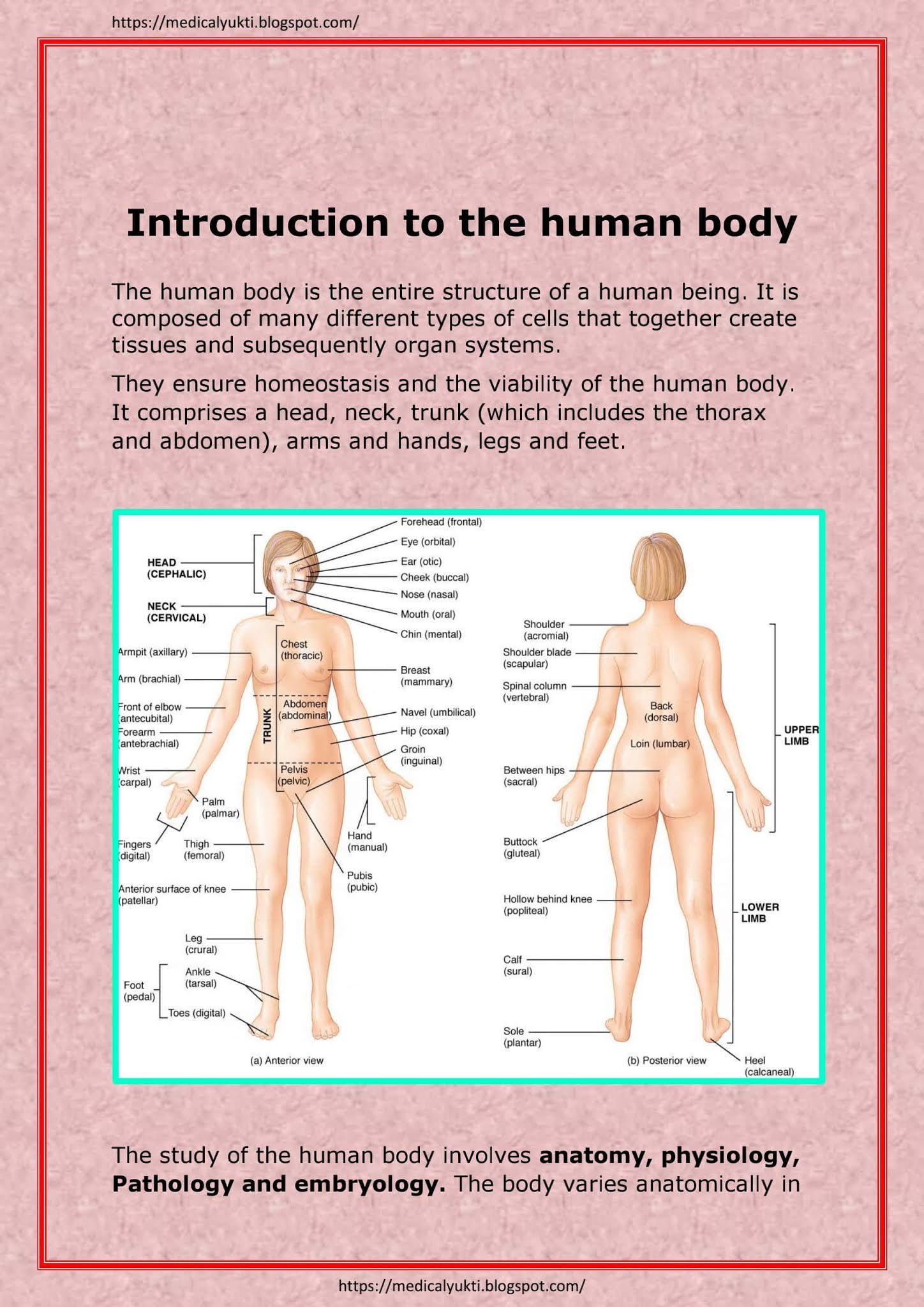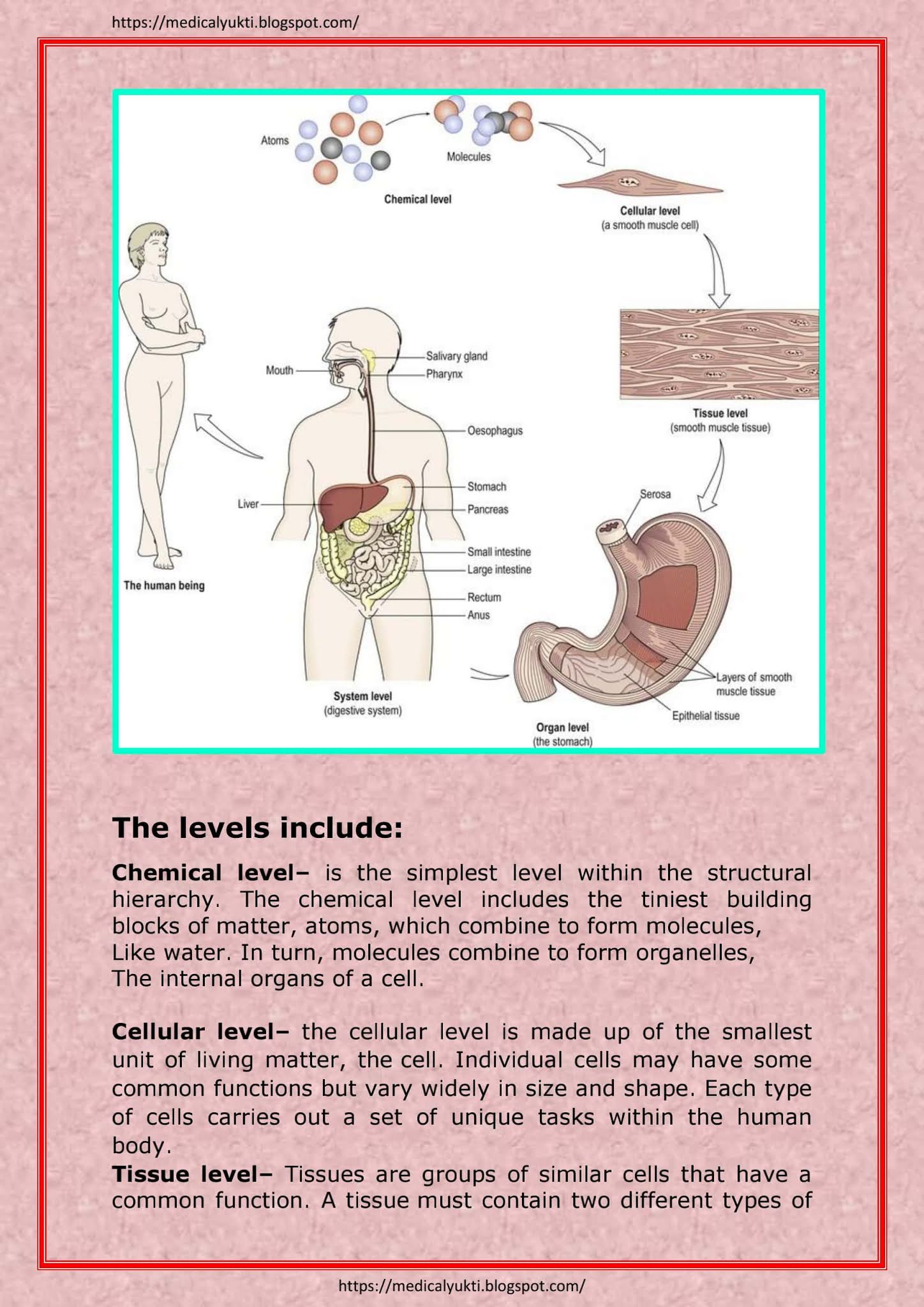Introduction to the human body
The human body is the entire structure of a human being. It is composed of many different types of cells that together create tissues and subsequently organ systems.
They ensure homeostasis and the viability of the human body. It comprises a head, neck, trunk (which includes the thorax and abdomen), arms and hands, legs and feet.
The study of the human body involves anatomy, physiology, Pathology and embryology. The body varies anatomically in known ways. Many systems and mechanisms interact in order to maintain homeostasis, with safe levels of substances such as sugar and oxygen in the blood.
The body is studied by health professionals, physiologists, anatomists, and by artists to assist them in their work.
Anatomy- is the study of the structure of the body and
The physical relationships between its constituent parts.
Physiology- is the study of how the body systems work,
And the ways in which their integrated activities maintain
Life and health of the individual.
Pathology- is the study of Abnormalities and pathophysiology considers how they Affect body functions, often causing illness.
Embryology-is the branch of biology that studies the prenatal development of gametes (sex cells), fertilization, and development of embryos and fetus.
















































0 Comments: